Chemical Storage: Ensuring Safety and Compliance in Hazardous Material Handling
Date Posted:11 June 2024
By considering key factors such as compatibility, container integrity, ventilation, temperature control, labeling, and secured storage, organizations can mitigate risks and ensure the safe handling and storage of chemicals.
Chemicals play a crucial role in various industries, from manufacturing and agriculture to healthcare and research. However, the safe storage and handling of chemicals are of utmost importance to prevent accidents, protect workers, and minimize environmental risks. Chemical storage encompasses a range of practices and technologies designed to store hazardous substances safely and securely. In this article, we explore the importance of proper chemical storage, key considerations, and best practices to ensure safety and compliance in hazardous material handling.
Importance of Proper Chemical Storage
Safety: Hazardous chemicals pose risks such as fire, explosion, toxicity, and environmental contamination. Storing chemicals correctly reduces these risks and protects workers, facilities, and the surrounding environment from harm.
Compliance: Regulatory agencies such as the Occupational Safety and Health Administration (OSHA) and the Environmental Protection Agency (EPA) have strict regulations governing the storage of hazardous materials. Compliance with these regulations is necessary to avoid fines, penalties, and legal liabilities.
Preservation of Chemical Integrity: Chemicals can degrade, react, or become contaminated if not stored properly. Proper storage conditions, such as temperature control and containment, help maintain the integrity and effectiveness of chemicals over time.
Key Considerations for Chemical Storage
Compatibility: Chemicals should be stored according to their compatibility to prevent reactions or hazards. Segregate incompatible chemicals to minimize the risk of spills, leaks, or fires.
Container Integrity: Chemical containers should be durable, leak-proof, and resistant to corrosion or degradation. Check containers regularly for signs of damage or deterioration and replace as needed.
Ventilation: Adequate ventilation is essential to prevent the buildup of toxic fumes or vapors. Store chemicals in well-ventilated areas or use fume hoods and ventilation systems to remove hazardous gases.
Temperature Control: Some chemicals are sensitive to temperature variations and must be stored within specific temperature ranges to maintain stability and safety. Use refrigerators, freezers, or temperature-controlled cabinets for temperature-sensitive chemicals.
Labeling and Signage: Clearly label chemical containers with information such as the chemical name, hazard warnings, handling instructions, and expiry dates. Use signage to identify storage areas and communicate safety precautions to workers.
Secured Storage: Chemical storage areas should be secured from unauthorized access to prevent theft, tampering, or accidental exposure. Use lockable cabinets, cages, or restricted access areas to control entry to chemical storage facilities.
Best Practices for Chemical Storage
Inventory Management: Maintain an inventory of stored chemicals, including quantities, locations, and hazard classifications. Regularly review and update the inventory to track usage, disposal, and replenishment needs.
Spill Containment: Implement spill containment measures such as secondary containment basins, spill pallets, or absorbent materials to contain and mitigate spills or leaks. Train personnel in spill response procedures and provide spill kits for quick containment and cleanup.
Training and Education: Provide comprehensive training and education to personnel involved in chemical handling and storage. Ensure workers understand the hazards associated with different chemicals, proper storage practices, emergency procedures, and regulatory requirements.
Regular Inspections and Maintenance: Conduct routine inspections of chemical storage areas, containers, and equipment to identify and address hazards or deficiencies promptly. Regular maintenance and servicing of storage equipment ensure optimal performance and compliance with regulations.
Emergency Preparedness: Develop and implement emergency response plans for chemical spills, leaks, or accidents. Provide training, equipment, and resources to enable swift and effective responses to emergencies and minimize potential risks to personnel and the environment.
Proper chemical storage is critical for maintaining a safe and compliant work environment in industries where hazardous materials are used. By considering key factors such as compatibility, container integrity, ventilation, temperature control, labeling, and secured storage, organizations can mitigate risks and ensure the safe handling and storage of chemicals. Adhering to best practices, including inventory management, spill containment, training, inspections, and emergency preparedness, further enhances safety, compliance, and environmental protection. Ultimately, investing in proper chemical storage measures is essential for safeguarding personnel, facilities, and the environment from the inherent risks associated with hazardous materials.

























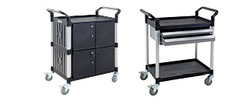

































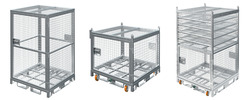

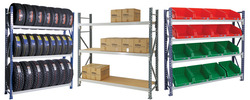





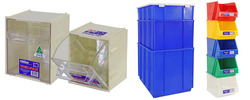




























 Trolleys / Hand Trucks
Trolleys / Hand Trucks 2 Tier Trolleys
2 Tier Trolleys 3 Tier Trolleys
3 Tier Trolleys Aluminium Trolleys
Aluminium Trolleys Appliance & Hand Trucks
Appliance & Hand Trucks Cage Trolleys
Cage Trolleys Cleaning Carts & Trolleys
Cleaning Carts & Trolleys Construction Trolleys
Construction Trolleys Dollies
Dollies Foldable Trolleys
Foldable Trolleys Hospital Trolleys
Hospital Trolleys Laundry/Linen Trolleys
Laundry/Linen Trolleys Load Skates & Tow Tugs
Load Skates & Tow Tugs Mail / Office Trolleys
Mail / Office Trolleys Multi Purpose Trolleys
Multi Purpose Trolleys Multi-Tier Shelf Trolleys
Multi-Tier Shelf Trolleys Order Picking Trolleys
Order Picking Trolleys Panel Cart Trolleys
Panel Cart Trolleys Platform Trolleys
Platform Trolleys Powered Trolleys
Powered Trolleys Shopping Trolleys
Shopping Trolleys Stainless Steel Trolleys
Stainless Steel Trolleys Tool Trolleys
Tool Trolleys Utility Carts
Utility Carts Warehouse Trolleys
Warehouse Trolleys Custom Trolleys
Custom Trolleys Lifting Equipment
Lifting Equipment Forklift Attachments
Forklift Attachments Jib Attachments
Jib Attachments Lifting Hoists & Pallet Hooks
Lifting Hoists & Pallet Hooks Manual Stackers & Lifters
Manual Stackers & Lifters Pallet Jacks
Pallet Jacks Pallet Lifters
Pallet Lifters Pallet Rotators & Dispenser
Pallet Rotators & Dispenser Powered Pallet Trucks & Electric Lifters
Powered Pallet Trucks & Electric Lifters Scissor Lift Trolleys and Tables
Scissor Lift Trolleys and Tables Conveyor Equipment
Conveyor Equipment Conveyor Frames
Conveyor Frames Conveyor Stands
Conveyor Stands Roller Conveyors
Roller Conveyors Skate Wheel Conveyors
Skate Wheel Conveyors Access Equipment
Access Equipment Container & Yard Ramps
Container & Yard Ramps Step Stools & Ladders
Step Stools & Ladders Work Platforms & Crane Cages
Work Platforms & Crane Cages Drum Handling
Drum Handling Drum Storage & Bunding
Drum Storage & Bunding Drum Trolleys & Lifters
Drum Trolleys & Lifters Forklift Drum Handling
Forklift Drum Handling Containment & Spillage
Containment & Spillage Aerosol Cans Storage Cages
Aerosol Cans Storage Cages Bunded Pallets & Storage
Bunded Pallets & Storage Corrosive Goods Storage Cabinets
Corrosive Goods Storage Cabinets Flammable Liquid Cabinets
Flammable Liquid Cabinets Forklift Gas Storage Cages
Forklift Gas Storage Cages Gas Cylinder Storage
Gas Cylinder Storage Site Storage
Site Storage Spill Kits
Spill Kits Stillage Cages
Stillage Cages Waste Handling
Waste Handling Bin Lifters & Tippers
Bin Lifters & Tippers Plastic Waste Bins and Carts
Plastic Waste Bins and Carts Steel Waste and Tipping Bins
Steel Waste and Tipping Bins Storage Equipment
Storage Equipment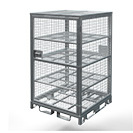 750 Series Cage Configurations
750 Series Cage Configurations Heavy Duty Cabinets & Benches
Heavy Duty Cabinets & Benches Heavy Duty Shelving
Heavy Duty Shelving Mega Bins & Pallets
Mega Bins & Pallets Packing Benches
Packing Benches Pallet Racking Accessories
Pallet Racking Accessories Parts Trays & Stor-Pak Bins
Parts Trays & Stor-Pak Bins Pegboard & Louvre Panels
Pegboard & Louvre Panels Plastic Bins
Plastic Bins Plastic Handling Solutions Bins
Plastic Handling Solutions Bins Plastic Pallets
Plastic Pallets Stack & Nest Bins
Stack & Nest Bins Storage Cages
Storage Cages Workplace Equipment
Workplace Equipment Workbenches
Workbenches Modular Workbenches
Modular Workbenches Electric Height-Adjustable Workbenches
Electric Height-Adjustable Workbenches Floor Matting
Floor Matting Industrial Weighing Scales
Industrial Weighing Scales Pallet Wrapping & Packaging Machinery
Pallet Wrapping & Packaging Machinery Ramps
Ramps Stationery Cupboards
Stationery Cupboards Storage and Stillage Cages
Storage and Stillage Cages Tool Trolleys
Tool Trolleys Tooling Cabinets
Tooling Cabinets Wheelie Bins
Wheelie Bins Workshop Equipment
Workshop Equipment Safety Equipment
Safety Equipment Gloves and PPE
Gloves and PPE Pallet Rack Post Protectors
Pallet Rack Post Protectors Safety Barriers & Bollards
Safety Barriers & Bollards Safety Knives & Cutters
Safety Knives & Cutters Signs and Traffic Supplies
Signs and Traffic Supplies Tool & First Aid Boxes
Tool & First Aid Boxes Construction Equipment
Construction Equipment Concrete Equipment
Concrete Equipment General Site Equipment
General Site Equipment Lifting Equipment
Lifting Equipment Site Storage
Site Storage Waste
Waste 











